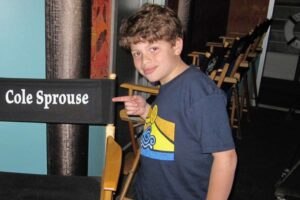Subscribe to our newsletter
Success! Your account was created and you’re signed in.
Please visit My Account to verify and manage your account.
An account was already registered with this email. Please check your inbox for an authentication link.
‣ Last week, Hyperallergic Editor-in-Chief Hrag Vartanian and Publisher Veken Gueyikian gathered a group at the Armenian Grove Plaque in Union Square to commemorate Armenian Genocide Remembrance Day. Arun Venugopal reports on Vartanian’s petition demanding that Mayor Adams recognize the genocide for Gothamist:
“We came together because last year we were really disturbed by the news that New York City mayor had possibly agreed not to recognize the Armenian genocide because of some sort of backroom deal,” Vartanian said.
Federal prosecutors accused Adams of using the power of his office in exchange for luxury travel upgrades and illegal campaign contributions from Turkish nationals. In the federal indictment against Adams, prosecutors said a Turkish official contacted an Adams staffer on April 21, 2022, noting that the Armenian Genocide Remembrance Day was approaching and asking for assurance that Adams would not make a statement about it. Prosecutors said the staffer provided that assurance and that Adams did not make a statement.
Vartanian, the co-founder and editor of the online arts magazine Hyperallergic, started an online petition urging people “to tell the mayor that there is no room for genocide denial or equivocating about genocide in New York City!”
‣ And earlier in April, our News Editor Valentina Di Liscia moderated an illuminating panel for the Abrons Arts Center on the increasingly steep costs of being an artist in New York City — and how the arts community is building more sustainable systems:
‣ Nostalgia for the cozy ’90s aesthetic is alive and well, and Harry McCracken revisits the folksy raccoon illustrations of erstwhile computer magazine advertisements for Technologizer:
If you inspect the art closely enough, you’ll spot some boxes of vintage 1991 software, including The Microsoft Office (which, like TheFacebook.com, eventually lost its “The”). But they’re Easter eggs in a scene that is mostly about raccoons making pies—assisted by a bunny rabbit and a beaver—and playing what I assume is folk music. The piece looks like an illustration from a classy children’s book. That made sense, since Ingraham’s work in that field helped him secure his PC Connection assignment.
What on Earth was this beautifully done, homey scene—part Beatrix Potter, part Norman Rockwell—doing in a mail-order ad for computer products? The text below, by copywriter David Blistein, acknowledged that people might find it puzzling. It explained that PC Connection was based in tiny Marlow, New Hampshire (population 567) and prided itself on good customer service. The point of the characters, it said, was to add “a human touch to high tech.”
‣ Sculptor Scott Burton approached public seating as a form of public art. For the New York Review of Books, Jarrett Earnest mines the radical values embedded in his interest in objects designed for repose:
Throughout the 1980s Burton turned to all-encompassing site-specific installations that seemed to merge all his previously disparate interests and endeavors. By situating his sculptures within a larger environment, he combined his decades of research into emotional and psychological nuances of body language and the organization of social space, infusing the seemingly modest furniture with his queer politics and class consciousness. The result was what he saw as a truly “public art”:
“Not because it is necessarily located in public places, but because its content is more than the private history of its maker. It might be called popular art, not because it is a mass art, but because it is not an unpopular art, not a ‘difficult’ or ‘critical’ art.”
The fact that Burton was living with AIDS while completing his most ambitious public projects adds another valence, one that has been central to the reengagement with his work and legacy today. In his move from performance to sculpture to public space, his queerness, like his conception of art, continued to expand in scope and implication. While he flaunted his leather-clad personal life among close art world friends, Burton’s public persona in the 1980s became one of consummate professionalism, downplaying his earlier, more queer performance work in the service of realizing his increasingly complex public commissions. There was an undeniable power in making public spaces for strangers to gather during the AIDS crisis, to touch and be touched by objects, when those who suffered were being treated as pariahs, legally and socially excluded from public life while facing their own mortality and that of their friends. Burton’s installations conjure possible communities, the comfort of strangers intersecting but diffused in time.
‣ Last week, a mob of around 100 men stalked and threatened a woman in Crown Heights because they thought she was part of a protest against Israel’s far-right security minister, Itamar Ben-Gvir. Jake Offenhartz reports on the horrifying incident for AP:
“As soon as I pulled up my scarf, a group of 100 men came over immediately and encircled me,” said the woman, who spoke to the AP on the condition of anonymity because she feared for her safety.
“They were shouting at me, threatening to rape me, chanting ‘death to Arabs.’ I thought the police would protect me from the mob, but they did nothing to intervene,” she said.
As the chants grew in intensity, a lone police officer tried to escort her to safety. They were followed for blocks by hundreds of men and boys jeering in Hebrew and English.
Video shows two of the men kicking her in the back, another hurling a traffic cone into her head and a fourth pushing a trash can into her.
“This is America,” one of the men can be heard saying. “We got Israel. We got an Army now.”
‣ ICE released Palestinian Columbia student Mohsen Mahdawi yesterday, two weeks after arresting him for his activism. The Intercept‘s Jessica Washington reports on this important step forward amid the Trump administration’s wave of abductions and deportations:
“It’s kind of a death sentence,” Mahdawi previously told The Intercept. “Because my people are being killed unjustly in an indiscriminate way.”
While his legal battle is ongoing, the decision marks a clear victory for the international students at the center of the Trump administration’s crackdown on pro-Palestinian organizers. “We are hopeful that it will build momentum for the release of Mahmoud [Khalil], Rumeysa [Öztürk], Dr. Bader Khan Suri, and other students and scholars detained for their speech in support of Palestinian rights,” Noor Zafar, a senior staff attorney with the ACLU Immigrants’ Rights Project and a member of Khalil’s legal team, wrote to The Intercept.
‣ I know we’re all tired of essays about the perils of ChatGPT, but Scaachi Koul’s latest for Slate on discovering an AI-generated biography of her life offers some candid insights into authorship, risk, and the human touch:
Earlier this year, I read One Day, Everyone Will Have Always Been Against This, by Omar El Akkad, about Palestine, the failure of neoliberalism, and the claustrophobic realization that the West has not fulfilled its endless promises. “There is no terrible thing coming for you in some distant future, but know that a terrible thing is happening to you now. You are being asked to kill off a part of you that would otherwise scream in opposition to injustice. You are being asked to dismantle the machinery of a functioning conscience,” he writes. “Who cares if diplomatic expediency prefers you shrug away the sight of dismembered children? Who cares if great distance from the bloodstained middle allows obliviousness? Forget pity, forget even the dead if you must, but at least fight against the theft of your soul.”
It’s a near-perfect book, but what’s remarkable about it isn’t just that it exists—as if anyone could have written it, robot or man—but specifically that someone like El Akkad wrote it, now, in this time when it’s risky to write with such clarity about Palestinians and fascism. He’s Muslim, born in Egypt, raised in Qatar and Canada, now living on the West Coast. Unavoidably, his work is often filtered through white executives and white audiences, never mind Canadian arts grants once funded by, for example, a bank with a stake in an Israeli arms maker. His art, focused on the essential question of human freedom, is a risk to him. The point of One Day isn’t just that the work is stirring and that the prose is excellent. The point is that he stuck his neck out, which makes it easier for me to stick mine out, too. The context is what makes the art impressive beyond just a technical achievement—the medium is the message, and so the messenger is part of the story, too. A book without an author is just a pamphlet. There’s no real value in a drawing made by hands I can’t see or get to know. It’s not enough for something to merely exist.
‣ A new episode of Untold Earth investigates the science behind crackling sounds generated by the Northern Lights:

Required Reading is published every Thursday afternoon, and it is comprised of a short list of art-related links to long-form articles, videos, blog posts, or photo essays worth a second look.
Credit: hyperallergic.com











